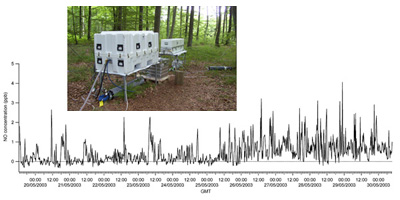Forest Studies
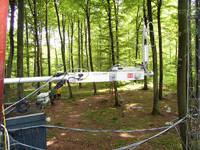
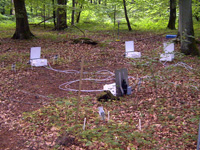
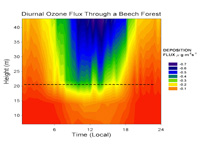
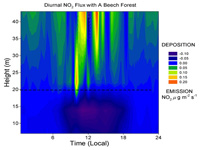
The group’s work is concerned with exchange and transport of aerosols and trace gases to and within forest ecosystems. Much of our previous work is conducted in collaboration with colleagues at CEH, Edinburgh as part of EU funded programmes on pan European surface atmosphere exchange programmes investigating aerosol and nitrogen species exchange to different ecosystems. Upcoming programmes are focusing on tropical rainforest systems. We have investigated the emission of soil bacterial derived NO emissions from forest soils and the chemical evolution and turbulent transport of the NO-NO2-O3 chemical triad within different forest canopies. We make direct measurements of ozone and NO2 fluxes at different heights in the trunk space beneath, within and above the forest canopy using the eddy covariance technique.
Figure 1a. showing some typical instrumentation deployed at the Soroe flux site in Denmark. These include turbulence sensors, fast response chemiluminescence detectors and quantum cascade laser absorption spectrometers (QCLAS-Aerodyne Inc). Soil NO fluxes are measured suing automated cuvettes, Figure 1b. Figure 2a. and b show the results of these measurements of; showing the diurnal evolution of the vertical ozone and NO2 flux profile respectively. The dashed line in each graph shows the position of the top of the forest canopy. We have found that conversion of NO to NO2 can be enhanced below dense forest canopies under certain conditions and provided the ambient concentration above the forest is below certain critical levels NO2 can be emitted from the canopy which will have consequences for ozone production downwind of forested regions.
Recent work in this area includes measurements of soil NO fluxes and in canopy aerosol and trace gas fluxes in a tropical rain forest on Borneo during the ACES project. This work included studies of bioaerosol (pollen/spores etc) loadings within and above the forest canopy using the WIBS instrument. The ACES project was coupled to the OP3 project where measurements were made of emissions from the forest as a whole from an above canopy location and an airborne platform. These measurements included particle, water vapour and ozone fluxes at multiple heights above the canopy.
